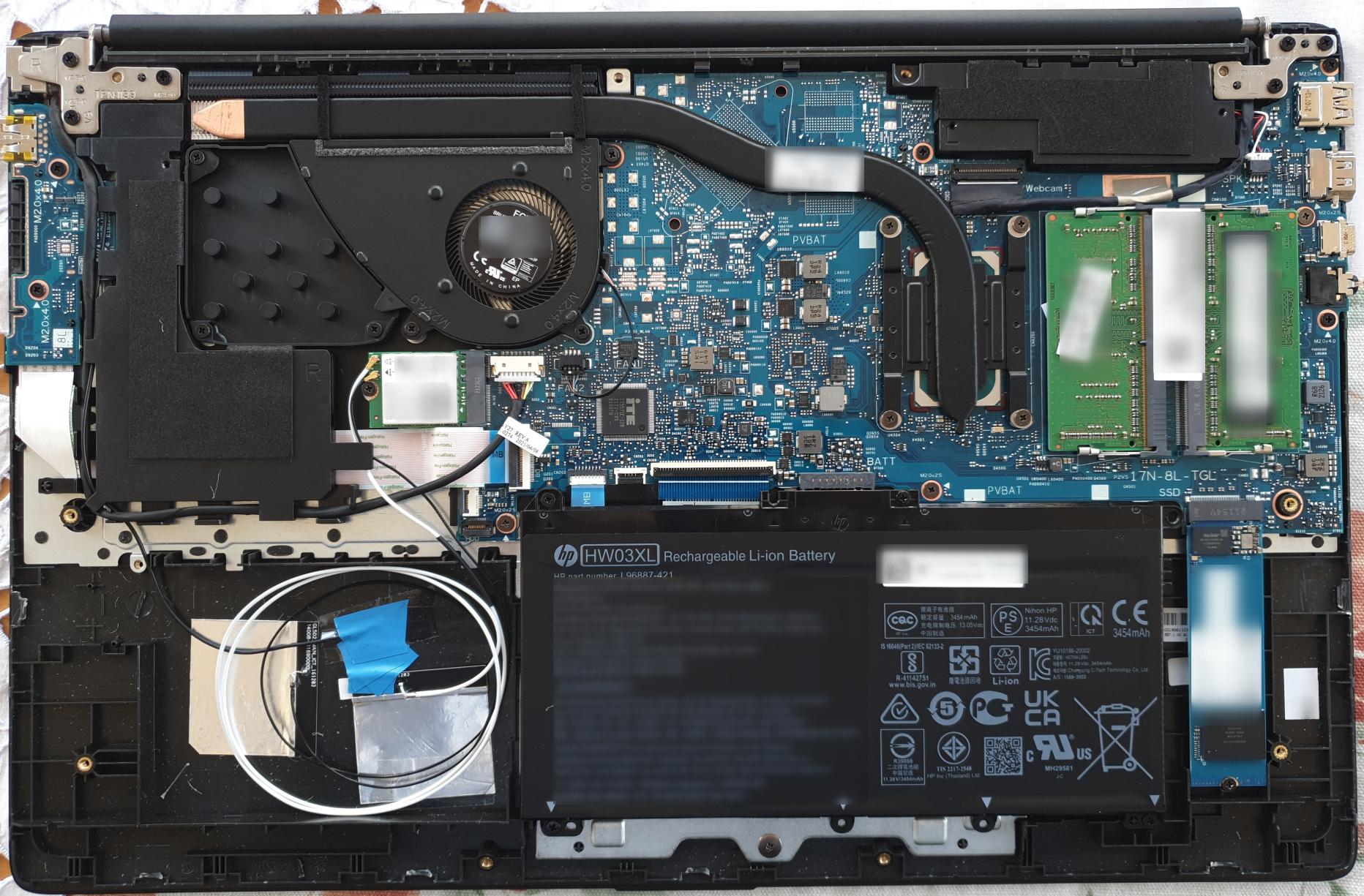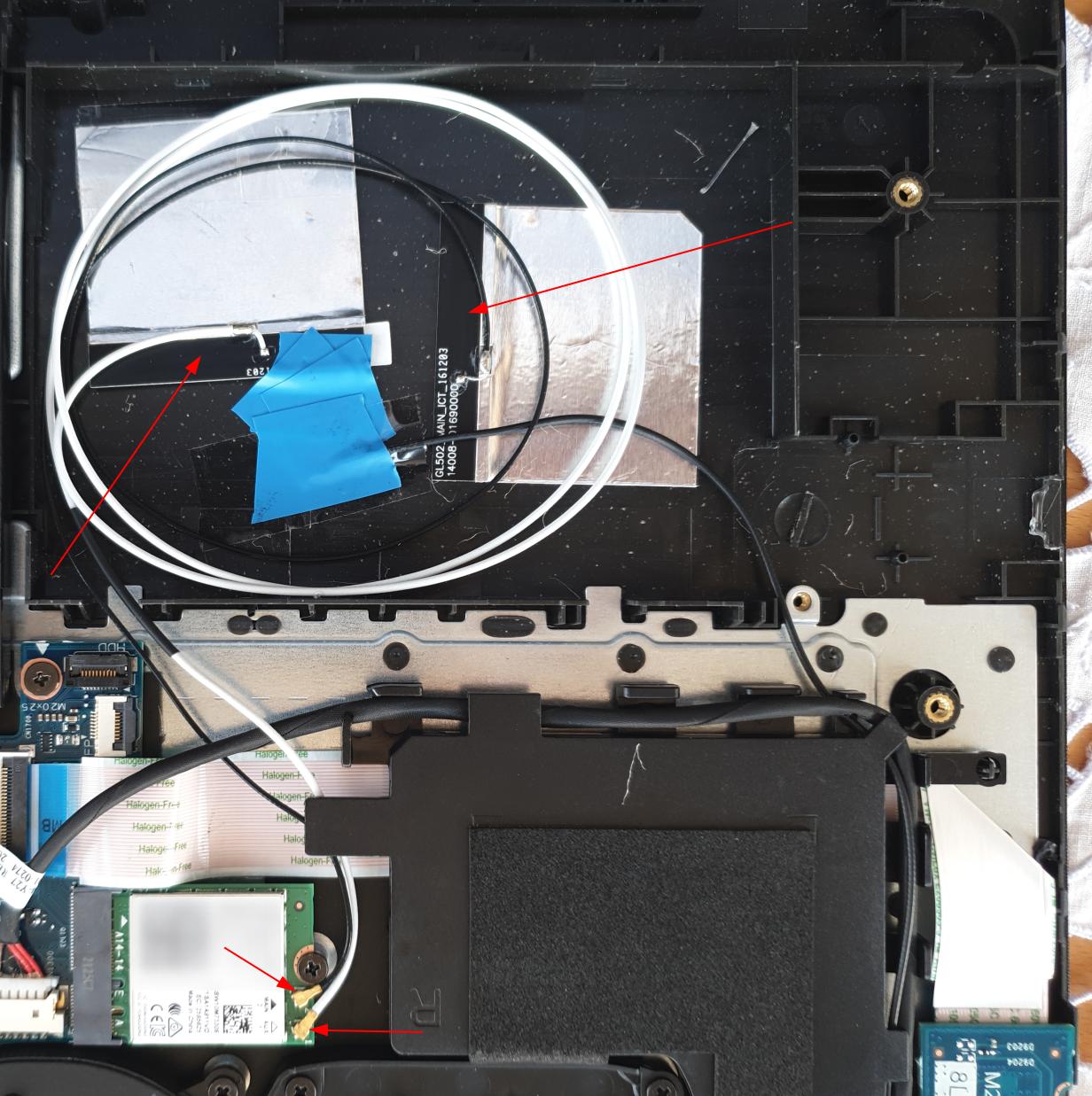
In the previous post I’ve been describing my experiences running Ubuntu on a brand new notebook with the latest hardware. I was quite happy with the result, except for the bad Linux driver support of Realtek for their entry level 802.11ac RTL8221CE chip that only supports a single RF chain. So I had to do something about that.
Like SSDs and RAM, Wifi is a pluggable module in the notebook, so it can be replaced by another module. Perhaps I could have lived with the meager performance of the single RF chain setup, but the instability of the default driver and the lack of the auxiliary driver to support higher 5 GHz channels made me think about just replacing the card altogether with something better.
Realtek out, Intel in
So I went for a pretty much up to date Intel AX200 Wifi card that supports two RF chains, a 160 MHz channel and 802.11ax. The module costs 19 euros with next day delivery, so replacing the Wi-Fi card with something better is a no-brainer from a financial point of view. Fun fact: The Realtek card costs €15.50 in the same store, so the price difference between old+slow to shiny+fast (as we will see below) is only €3.50 + a few cents for a bit of cable and a second antenna in the notebook.
BIOS Whitelist?
One big question that could only be answered by trying was if the notebook’s BIOS has some sort of Wi-Fi module whitelist that would prevent me to put in a different one. A previous Lenovo notebook I bought several years ago unfortunately had this anti-feature. Fortunately, the HP 17-cn0142ng didn’t have that, so replacing the card worked like a charm.
RF Connectors are Delicate
A word of caution: IPEX-4 RF connectors used for connecting Wi-Fi modules with antennas these days is are not designed for durability. The Internet has it that they are designed for 5 connect/disconnect cycles. And that’s not an understatement, because I managed to rip the IPEX-4 socket out of the Realtek card after the third or fourth disconnect. This ruined both the card and the connector at the cable side. One can of course cut the cable and solder the antenna cable to the card but that’s definitely not for the fainthearted.
I Wanted A Second Antenna

While it is possible to run a two RF chain Wi-Fi module with a single antenna chain and leave the second port open, data rates are not stellar. So I decided to get a pair of Wi-Fi notebook antennas that already come with the cable and the IPEX-4 connector attached at the other end. The cost: 7 euros with next day delivery for the pair. That 17″ notebook has a lot of spare space inside, so it was easy to put both antennas at a different angle into the extra drive bay. Putting the antennas behind the LCD panel would of course be much nicer, but that would have meant a serious disassembly / reassembly of the notebook. That’s perhaps something for another day. I could of course have used the already existing antenna behind the LCD panel, but since I ruined the connector, I went for the easy approach first and put both antennas in the drive bay.
The Result
And…. the result is really stunning! Instead of a 200 Mbit/s connection over a single RF chain and an 80 MHz channel in the lower part of the 5 GHz band, I’m now getting a solid 900 Mbit/s over a 160 MHz channel at the same location. Since the antennas are not behind the LCD panel, speeds drop a bit when I rest my hand on the notebook next to the touchpad. However, that’s a small price to pay.
So there you go, a usable and high performing Wi-Fi connection for 20 euros!